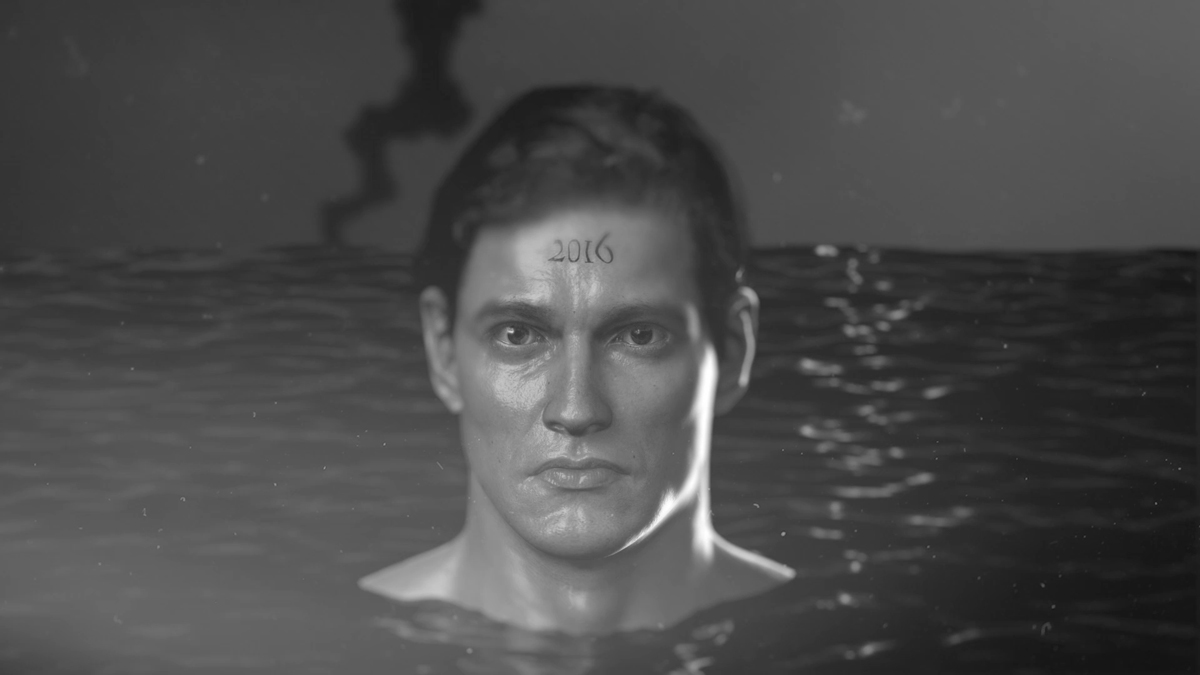He adds to the list the deeply psychological motifs of memory, trauma and grief onto the landscape of a body suffering with disease, or eyelashes stuck under foreskin. Although Atkins’ primary medium is film, in which he shows us an HD 3D virtual world, he is not a video-artist but instead engages performance art, poetry, literature, music (both classical and pop) and the genres of horror and thriller films, bringing them into soundscapes and installations. He projects immaterial video onto intensely present material walls that slant, tilt, prop, or stand freely becoming “image-objects” that move off the screen into the lived experience. Three slices of wall in the corners of the largest room face off against each in his immersive computer generated performance, Ribbons, 2014, the central work of the exhibition. As the title of his exhibition suggests the works included were made in the last two years and reference the myth of the Ouija Board, used to contact the dead through short fragmented “text” messages, and the symbolism, belief systems of the occult it conjures.
Atkins’ work plunges us head first into a whole universe with the failures and fragility of our contemporary embodied existence
The recurring motifs of death, sex, disease, swellings, tumors, psychological pain and moments of humor in the face of that pain and tremendous loss are made intimate through the works directly engaging us as if the artist is performing in the room. Ed Atkins is among the most important artists in the loosely associated group known as the Post-internet generation, who came of age in a time when the internet moved from a novelty at the fringes to a necessity central to our everyday lived experience. This experience of the internet merging with life marked a change in subjectivity in the digital era which is a central theme to Atkins work. Post-internet is often traced back to the year 2008, a date that figures prominently in Untitled, 2015, Atkin’s newest work, which tellingly does not feature any videos but is instead made of silkscreened drawings in indian ink onto power-coated MDF panels that relate in scale to the body in size. The images move one into the other like a storyboard of of piles of body parts or naked bodies folding on each other.
Atkins’ work plunges us head first into a whole universe with the failures and fragility of our contemporary embodied existence, the intimate dialogue draws us into his often pained internal interlocutor. Much of the work is loosely based on Atkins’ own autobiography on the loss of his father who died of cancer in a long protracted battle to the disease. Some of the source materials for Atkins’ work comes from the diaries his father left behind other from Atkins’ own poetry. He wrote “The diary in particular took on near mythical proportions. He had, we knew, been keeping it since he was sixteen… the colossal diary is almost completely insoluble. Where does one begin? At the beginning? At the birth of his first child? Marriage? Or is it only manageable in fragments? – aphoristic nuggets and sound bites chiseled off the monolithic whole and savored as the persistence of a perspective from when he was alive: one dazzling glimpse at a time.” In a world where the endless stream of images is equally insoluble, Atkins has cut through directly to some of the most arresting and striking images of out time.
Ed Atkins’ Recent Ouija is on show at The Stedelijk Museum until May 31st 2015.












